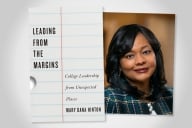You have /5 articles left.
Sign up for a free account or log in.
The FAQ to go with the announcement that Amherst College is launching a new scholarly press ends with the question "Isn't this endeavor wildly idealistic?" The answer is yes.
But Amherst thinks that there may be long-term gains -- both for scholarship and the economics of academic publishing -- by publishing books that are subject to traditional peer review, edited with rigor and then published in digital form only, completely free. Some university presses issue some of their works in free digital formats. And Rice University revived a dormant press in 2006 with the idea, only to abandon it in 2010. Amherst believes that its university press will, when it launches next year, be the only one publishing exclusively in free, digital formats.
The college is searching for a press director and two editors, whose positions will be financed through fund-raising for an endowment and by reallocating two vacant positions in the library. Eventually, the press aims to publish around 15 books a year (although that number is very tentative) -- all in liberal arts disciplines. So how, in an era when some university presses are being killed off and others are fighting to stay alive, did Amherst decide to move in this direction?
The impetus comes from the college's library. Bryn Geffert, librarian of Amherst, said that "we're going to lose money on this, and that's fine." He said that the Amherst administration and library leaders believe that one role of a library is to encourage the dissemination of scholarship, so these moves are consistent with the college's mission. And he said that he is alarmed by reports that university presses have cut back on the attention they are able to give to each book. (Geffert published a semi-apocalyptic vision of the current world of scholarly publishing in Inside Higher Ed in August.)
"We want to be very serious about the quality of the books and production," he said. "We're quite aware that many university presses are giving far less attention to manuscripts than in the past."
By emphasizing traditional peer review and quality control, Geffert said he hoped to fight the attitude that digital can't equal the value of print. "The stigma is real and it's something we have to overcome," he said. (An Inside Higher Ed poll of faculty members this year found that a majority believe that work published in online-only journals can be equal in quality to work published in print, but only a small minority agreed that online scholarship receives the same respect in tenure decisions as does print scholarship.)








